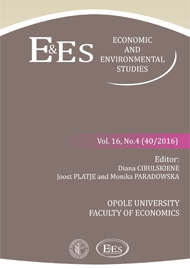Cost Evaluation of Utilising Building Materials Derived from Agricultural Waste as Sustainable Materials for Lightweight Construction
Cost Evaluation of Utilising Building Materials Derived from Agricultural Waste as Sustainable Materials for Lightweight Construction
Author(s): Usman Aliyu Jalam, Abdurrahman Aliyu Jalam, Ibrahim M. Sale, Olorunmeye Fredrick JobContributor(s): Monika Paradowska (Editor), Joost (Johannes) Platje (Editor), Diana Cibulskienė (Editor)
Subject(s): Economy, Agriculture, Energy and Environmental Studies
Published by: Uniwersytet Opolski
Keywords: Cost; Agricultural Waste; Sustainable Materials; Lightweight Construction
Summary/Abstract: Efforts from laboratory experiments and some practical approaches show that several building materials can be derived from agricultural waste and be used as partial or complete replacement of conventional building materials. These efforts however have not completely provided the solution for the need of alternative buildingmaterials. This is due to the lack of generalised information on the development of the materials, which most often test few properties of the materials, and without any meaningful studies of the economic implication of the innovations. This research work was aimed to establish whether there is cost benefit in utilising building materials derived from agricultural waste or not, and to what extent if any? The cost of utilising Ordinary Portland Cement (OPC), Rice Husk Ash (RHA), and Oil Palm Shell (OPS) in concrete, sandcrete blocks, bonding and plaster mortars was then evaluated. The cost was arrived at by adopting the actual cost of the material by volume and multiplyingit by the actual quantity by volume used. The study discovered that 41% cost reduction in mass concrete is the highest cost saving while 12% in plaster mortar is the lowest. An overall cost saving of about 24% in the total cost of materials recorded. However, the study discovered that overall cost saving is dependent on the distance of the agricultural waste from production or construction site. Lack of readily available appropriate technology for processing some of the agricultural waste to building material was identified as a major challenge.
Journal: Economic and Environmental Studies
- Issue Year: 16/2016
- Issue No: 4 (40)
- Page Range: 673-685
- Page Count: 13
- Language: English

